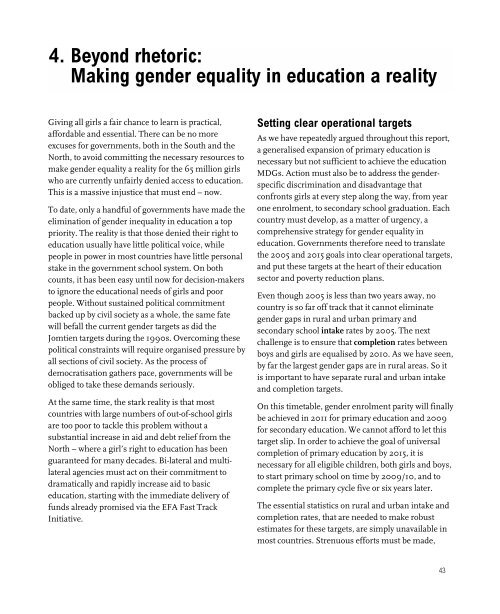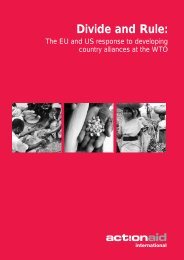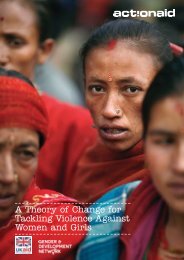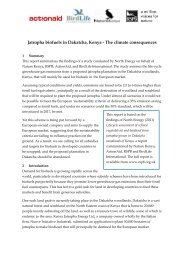A fair chance - United Nations Girls' Education Initiative
A fair chance - United Nations Girls' Education Initiative
A fair chance - United Nations Girls' Education Initiative
Create successful ePaper yourself
Turn your PDF publications into a flip-book with our unique Google optimized e-Paper software.
4. Beyond rhetoric:Making gender equality in education a realityGiving all girls a <strong>fair</strong> <strong>chance</strong> to learn is practical,affordable and essential. There can be no moreexcuses for governments, both in the South and theNorth, to avoid committing the necessary resources tomake gender equality a reality for the 65 million girlswho are currently un<strong>fair</strong>ly denied access to education.This is a massive injustice that must end – now.To date, only a handful of governments have made theelimination of gender inequality in education a toppriority. The reality is that those denied their right toeducation usually have little political voice, whilepeople in power in most countries have little personalstake in the government school system. On bothcounts, it has been easy until now for decision-makersto ignore the educational needs of girls and poorpeople. Without sustained political commitmentbacked up by civil society as a whole, the same fatewill befall the current gender targets as did theJomtien targets during the 1990s. Overcoming thesepolitical constraints will require organised pressure byall sections of civil society. As the process ofdemocratisation gathers pace, governments will beobliged to take these demands seriously.At the same time, the stark reality is that mostcountries with large numbers of out-of-school girlsare too poor to tackle this problem without asubstantial increase in aid and debt relief from theNorth – where a girl’s right to education has beenguaranteed for many decades. Bi-lateral and multilateralagencies must act on their commitment todramatically and rapidly increase aid to basiceducation, starting with the immediate delivery offunds already promised via the EFA Fast Track<strong>Initiative</strong>.Setting clear operational targetsAs we have repeatedly argued throughout this report,a generalised expansion of primary education isnecessary but not sufficient to achieve the educationMDGs. Action must also be to address the genderspecificdiscrimination and disadvantage thatconfronts girls at every step along the way, from yearone enrolment, to secondary school graduation. Eachcountry must develop, as a matter of urgency, acomprehensive strategy for gender equality ineducation. Governments therefore need to translatethe 2005 and 2015 goals into clear operational targets,and put these targets at the heart of their educationsector and poverty reduction plans.Even though 2005 is less than two years away, nocountry is so far off track that it cannot eliminategender gaps in rural and urban primary andsecondary school intake rates by 2005. The nextchallenge is to ensure that completion rates betweenboys and girls are equalised by 2010. As we have seen,by far the largest gender gaps are in rural areas. So itis important to have separate rural and urban intakeand completion targets.On this timetable, gender enrolment parity will finallybe achieved in 2011 for primary education and 2009for secondary education. We cannot afford to let thistarget slip. In order to achieve the goal of universalcompletion of primary education by 2015, it isnecessary for all eligible children, both girls and boys,to start primary school on time by 2009/10, and tocomplete the primary cycle five or six years later.The essential statistics on rural and urban intake andcompletion rates, that are needed to make robustestimates for these targets, are simply unavailable inmost countries. Strenuous efforts must be made,43
















